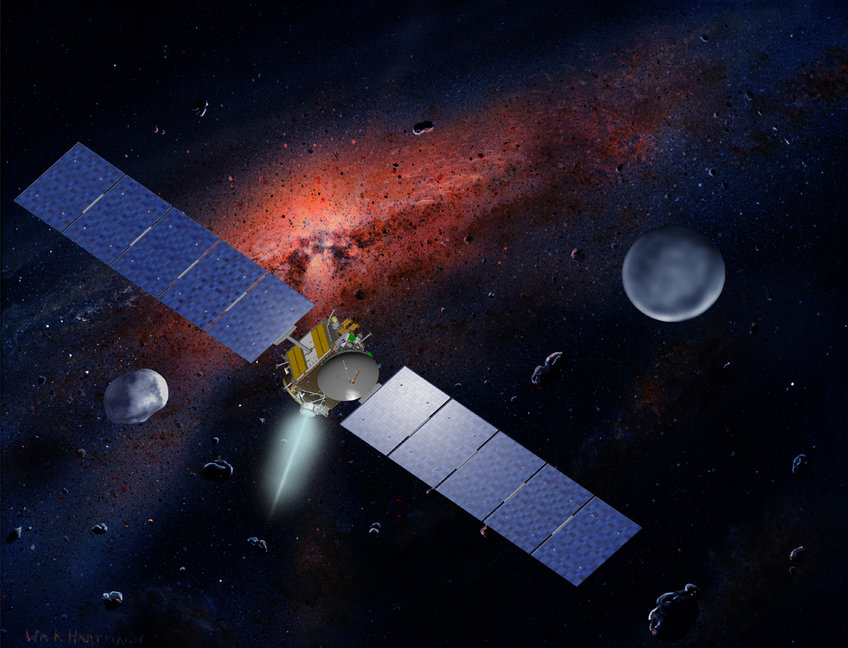Dawn begins its approach of asteroid Vesta
The camera system on board navigates NASA’s Dawn spacecraft towards its first destination.
Only less than three months and approximately 1.2 million kilometers still separate NASA’s space probe Dawn from its first destination: the asteroid Vesta that circles the Sun within the so-called asteroid belt beyond the orbit of Mars. The mission has now reached its official approach phase and will begin using its cameras to aid in its navigation. The camera operations are run by scientists and engineers from the Max Planck Institute for Solar System Research (MPS) in Germany.

Since its launch in September 2007, Dawn had been navigating by measuring the radio signal between the spacecraft and Earth, and using other methods that did not involve Vesta. But as the spacecraft closes in on its target, the navigation requirements become more precise. Here images taken by the camera system on board can help. By analyzing where Vesta appears relative to stars, navigators will pin down Vesta’s location and enable engineers to refine the spacecraft’s trajectory.
In the next months, the international Dawn team will also be searching the framing camera images for possible moons around Vesta. None of the images from ground-based and space telescopes have seen any moons. "But Dawn's camera system will be able to give us much more detailed images", says Dr. Andreas Nathues from MPS, Framing Camera Lead Investigator.
After its arrival at the asteroid Vesta, the space probe Dawn will stay in orbit around Vesta for one year, until July 2012. It will arrive at its second destination, an even more massive body in the asteroid belt called Ceres, in 2015. These two icons of the asteroid belt will help scientists unlock the secrets of our solar system's early history. The mission will compare and contrast the two giant asteroids, which were shaped by different forces. Dawn's science instrument suite will measure surface composition, topography and texture. In addition, the Dawn spacecraft will measure the tug of gravity from Vesta and Ceres to learn more about these bodies’ internal structures.
The Dawn mission to Vesta and Ceres is managed by NASA’s Jet Propulsion Laboratory for NASA's Science Mission Directorate (SMD), Washington. It is a project of the Discovery Program, managed for SMD by NASA's Marshall Space Flight Center, Huntsville, Ala. The University of California, Los Angeles, is responsible for overall Dawn mission science. Orbital Sciences Corporation of Dulles, Va., designed and built the Dawn spacecraft. The framing cameras have been developed and built under the leadership of the Max Planck Institute for Solar System Research, Katlenburg-Lindau, Germany, with significant contributions by the German Aerospace Center (DLR) Institute of Planetary Research, Berlin, and in coordination with the Institute of Computer and Communication Network Engineering, Braunschweig. The framing camera project is funded by the Max Planck Society, DLR, and NASA.
